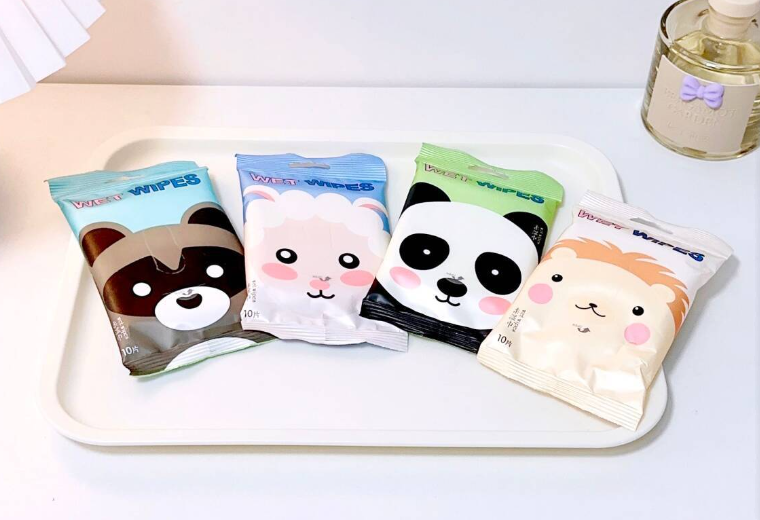Hello everyone, and welcome to “Tech Secrets Unveiled”! Today, we’re diving into a topic that’s both cutting-edge and close to our daily lives—is spunlace non woven fabric biodegradable?
Picture this: you’ve just used a super soft wet wipe, tossed it in the trash, and suddenly wondered, “Will this cloth-like but actually paper thing turn into a pile of non-degradable waste?” Don’t worry, today we’ll uncover this mystery!
1. What is Hydroentangled Nonwoven Fabric?
A. Definition and Manufacturing Process
Hydroentangled nonwoven fabric, also known as spunlace nonwoven fabric, is made by using high-pressure water jets to entangle fibers together, forming a cohesive fabric. Sounds complicated? Simply put, it’s about using high-pressure water to tie a bunch of fibers into a sheet!
Reference: Wang, H., & Batra, S. (2016). “Hydroentangling of Nonwoven Fabrics: Technology, Modeling and Applications.” Textile Research Journal, 86(7), 719-735.
B. Applications
This material is widely used due to its softness, absorbency, and breathability. It finds applications in medical, hygiene, cleaning products, and even clothing. Your daily wet wipes, makeup pads, and some disposable garments are all made from it.
2. Material Composition of Hydroentangled Nonwoven Fabric
A. Main Components
The main components of hydroentangled nonwoven fabric can be natural fibers (like cotton or bamboo fibers) or synthetic fibers (like polyester or polypropylene). Different compositions determine its various characteristics and uses.
B. Natural Fibers vs. Synthetic Fibers
Natural fibers such as cotton and bamboo have good biodegradability. On the other hand, synthetic fibers like polyester and polypropylene, due to their stable chemical structure, are not as easily degraded.
3. Exploring Biodegradability
A. What is Biodegradability?
Biodegradability refers to the process by which materials are broken down into water, carbon dioxide, and biomass by microorganisms in the natural environment. The speed and efficiency of this process are closely related to the chemical composition of the material.
B. Biodegradability of Natural Fibers
Natural fibers, due to their organic composition, can be broken down relatively quickly by microorganisms. For example, cotton fibers can completely degrade within a few months under suitable conditions.
Reference: Zhao, X., Li, J., & Liu, Y. (2018). “Biodegradability of Natural Fibers: A Review.” Journal of Environmental Science and Engineering, 56(4), 324-332.
C. Biodegradability of Synthetic Fibers
Synthetic fibers like polyester and polypropylene degrade much more slowly, potentially taking decades or even longer. Moreover, their degradation process might produce microplastics, leading to secondary environmental pollution.
4. Biodegradability of Hydroentangled Nonwoven Fabric
A. Challenges of Mixed Materials
Many hydroentangled nonwoven fabrics are a mix of natural and synthetic fibers. This hybrid structure complicates their biodegradability. While the natural part can degrade relatively quickly, the synthetic part may persist in the environment.
B. Environmental Impact Factors
The degradation rate is also influenced by environmental factors such as temperature, humidity, and microbial activity. Under ideal conditions, the natural fibers can degrade quickly, while the synthetic fibers will take much longer.
5. Future Prospects and Solutions
A. Research on Biodegradable Materials
Currently, researchers are working on developing fully biodegradable hydroentangled nonwoven materials, such as those using bio-based polymers or improved natural fiber processing techniques to enhance their degradability.
B. Recycling and Reuse
Besides developing new materials, recycling and reusing existing hydroentangled nonwoven products is a viable solution. Mechanical or chemical methods can be used to recycle them, reducing environmental impact.
Conclusion
Alright, that’s it for today’s reveal. To sum up, whether spunlace non woven fabric is biodegradable depends mainly on its material composition. The natural fiber parts are relatively easy to degrade, while the synthetic parts require more time and specific conditions. In the future, we hope to see more fully biodegradable hydroentangled nonwoven products. Let’s look forward to that together!
I hope this article helps you better understand the biodegradability of hydroentangled nonwoven fabric. Next time you use a wet wipe or disposable cloth, will you think about it a bit more? Don’t forget to like, bookmark, and share! See you next time, bye! 😄
Special Note: This article is original. If you need to reprint, please indicate the source. Tech Secrets Unveiled, see you next time!



